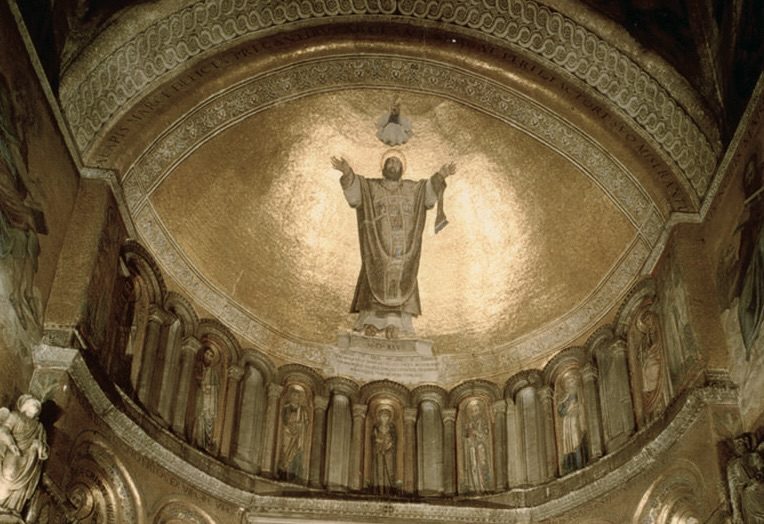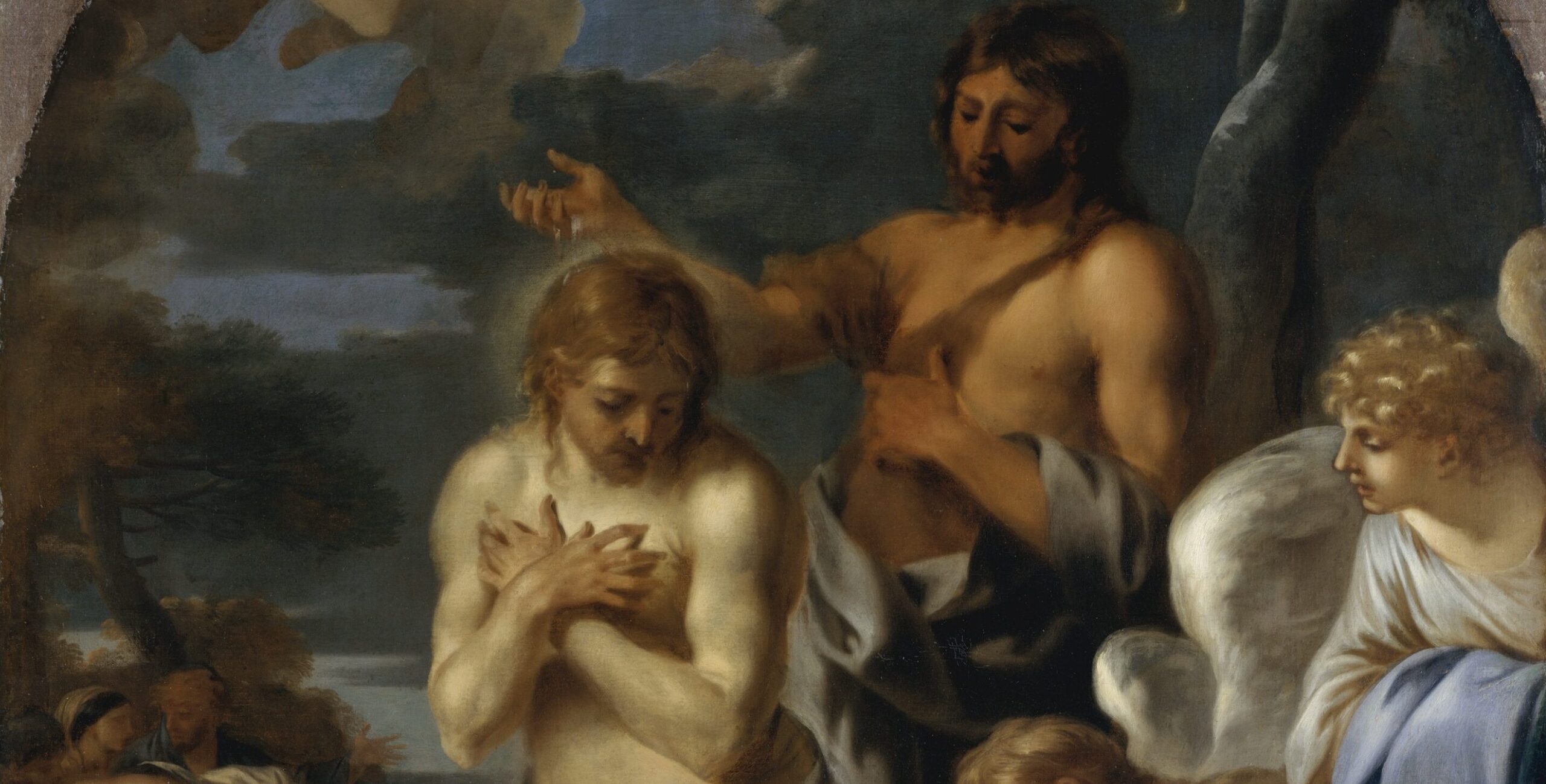Baptism used to be a descent into the womb of the cosmos itself. The word baptisma comes from the Greek βαπτίζειν (baptizein): to immerse, to submerge, to dye. The root bapto was used for dipping linen into pigment or plunging iron into molten liquid. It meant a total penetration, a transforming contact. To be baptised was to be sunk beneath the surface until another substance entered the flesh. It was a drowning in the element of Spirit. The old person perished under the waters so that a new body could rise.
I. The Immersion of Fire
The ancient rite carried a violence that modern religion has forgotten. It was often enacted at midnight during the Easter Vigil, the hour of the Moon, corresponding to the Imum Coeli of the Zodiac. The catechumen entered the baptistery stripped of clothes and name. The water was cold and the darkness absolute. The priest invoked the Father, the Son and Holy Spirit; three times the neophyte was plunged below the surface until breath and life were nearly extinguished. The act was a controlled catastrophe, with the soul meeting its own abyss. When he rose again, the first inhalation was pneuma, the Spirit. Baptism was a replication of creation itself, of the moment of one’s birth; the chaos of the waters filled by the descending fire of the Logos.
The Hebrew letter Shin, the flame of divine breath, was hidden in that descent. The passive water became the vessel of the active fire. The body became the altar of such an encounter. To be baptised meant to be set aflame under water; to be scorched into life. The early Fathers called it illumination. The baptistery was a cosmic theatre; either circular or octagonal, an image of resurrection and of the eighth day that lies beyond the week of the world.
II. The Neophyte and the New Creation
The newly baptised was called neóphytos, from neos and phytos, which meant newly planted. The soul is a seed buried in mud, woken by the descent of the Spirit. The rite replicated the secret work of spring: death in the ground, rebirth through water and light. The baptistery was the garden of that transmutation. It had its own building, standing apart from the main church because the uninitiated could not yet breathe the same air. Before crossing the threshold of the ekklesia, the neophyte had to die and be reborn in the baptismal font.

Architecturally, the ancient churches reflected this doctrine with geometric precision. The narthex, situated at the western end of the building, was the outer court of the uninitiated. Those who had not yet received baptism were allowed to attend the liturgy only from that space, standing behind the great doors that separated them from the nave. It was a physical and spiritual distance, the region of longing and preparation. The baptistery, often a detached structure beside the church, represented the chaos aquae, the primeval ocean stirred by the Logos. There the candidate was plunged into the element of death and renewal. The nave and altar beyond formed the restored cosmos, the body of the risen Christ.
To pass from one space to another was to cross invisible frontiers of being, hence from reflection to transparency, and from shadow to form. The baptismal pool stood at the centre of that movement, a small universe within stone, echoing the seven days of creation and the hidden day beyond time.
In that world the rite was not a gentle inclusion into a community but an irreversible mutation. It acted upon the initiate’s flesh and memory. The skin was oiled, the mouth and ears sealed, and the body exorcised. The word sacramentum still retained its Roman meaning: an oath of allegiance, sworn in blood or water, between mortal and divine. To break it was a crime against one’s own soul. The neophyte now belonged to a rite of utter transformation.
III. The Silence of the Modern Font
With the centuries, the power of the rite thinned. Once a secret body of initiates, the Church became a civic institution. The rite was given to infants before consciousness could even perceive it. The baptistery was absorbed into the main nave. The immersion became a gesture, a drop of water upon the forehead. The old awe and shock vanished and, with it, the primordial fire. The form endured but the Shin withdrew.
The loss was the experience. The mechanical repetition of the formula preserved the outer shape but drained the interior current. The water remained cold. The Spirit did not descend because the soul no longer expected the wound of its arrival. The modern initiate enters the church without passing through chaos, without meeting the angel at the gate, without dying. The act has become administrative, an event in the ledger of grace.
But the ancient potency waits beneath the surface. The etymology remembers what the practice forgot. To be baptised is to be submerged, to be dyed, to be extinguished and then relit anew. To be a neophyte is to be newly planted in the dark soil of the world. Each true awakening of the Spirit repeats that rite in secret. The water once again turns to fire, and the invisible baptistery opens within the heart.
Κύριε ελέησον
